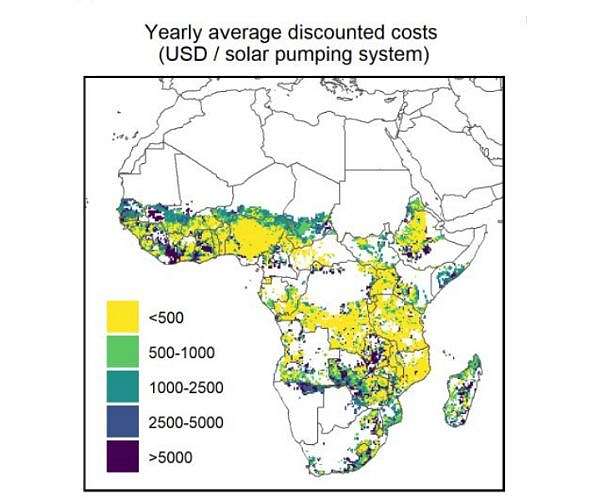Solutions to optimize solar energy use in irrigation communities
Irrigation communities strive to make their operations more sustainable both environmentally and economically. Energy self-sufficiency is emerging as a promising solution for the future of agriculture. In 2019, the Lower Guadalquivir Valley Irrigation Community, which covers almost 19,000 hectares and serves more than 2,000 irrigation systems, began using solar energy with a 6 megawatt photovoltaic installation – the largest of its kind among Spanish irrigation systems. This initiative has positioned the community as a pioneer and research center for the transition to a sustainable irrigation model.
Recently, the community collaborated with the Hydraulics and Irrigation Research Group of the Maria de Maeztu Unit of Excellence and the Department of Agronomy of the University of Cordoba (DAUCO). Together they have proposed strategies to maximize the use of solar energy, prevent energy waste and reduce dependence on external energy sources.
“The researchers responsible for the study, Maaike van de Loo, Emilio Camacho and Juan Antonio Rodriguez, explain that currently more solar energy is produced than is used, resulting in a surplus of around 50%, while a secondary source is needed to meet the energy needs. for example, if no solar energy is produced at night.” Their research, published in the journal Renewable Energy, examines two solutions to optimize energy consumption and minimize waste.
The first solution involves changing irrigation schedules to align with daylight hours when solar energy is available, and moving away from nighttime irrigation. Traditionally, the Lower Valley Community has preferred nighttime irrigation due to lower energy costs and reduced water evaporation. However, the cost savings of photovoltaic installation and the efficiency of drip irrigation, which reduces water use by up to 60%, provide compelling reasons for irrigation systems to adapt.
The proposed strategy shifts from 24-hour on-demand irrigation to an 8- to 12-hour period during sunlight hours, significantly increasing solar energy use to more than 90%. Although an additional energy source would still be needed to complement solar energy, especially given the variable weather conditions, Andalusia’s abundant sunshine (over 3,000 hours per year) would significantly reduce dependence on external energy, improving both economic and ecological sustainability would be increased.
The second solution focuses on the economics: selling excess energy, a practice that already exists in the Lower Valley Community. However, increased solar energy production at national and European level has driven down prices, impacting profitability.
The study concludes that while there is no perfect solution for fully utilizing solar energy, solar energy remains a valuable resource. The researchers believe that ongoing research and the experience of the Lower Valley Irrigation Community will shape the future of irrigation, balancing environmental protection with economic viability by harnessing the region’s solar potential.


